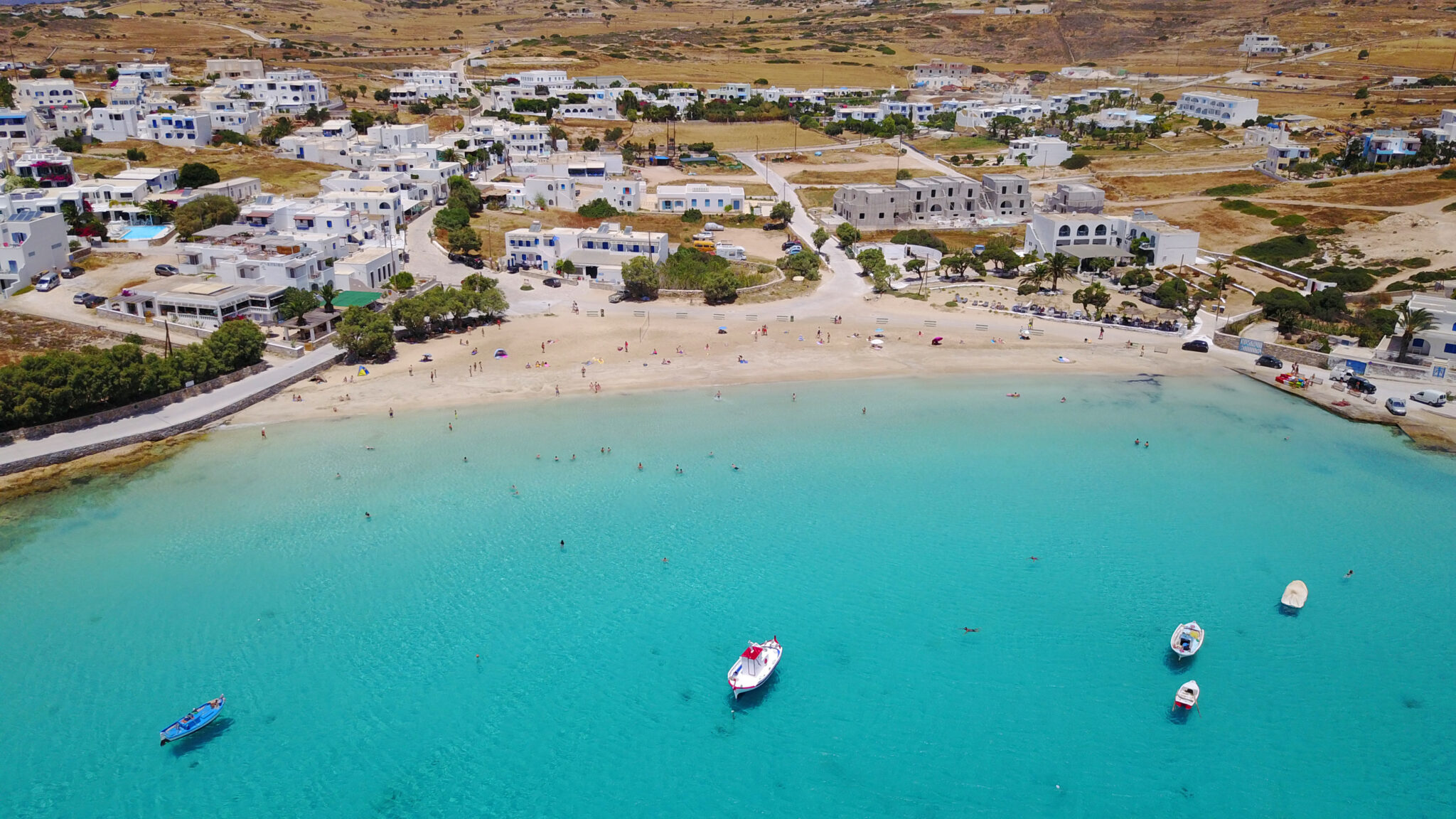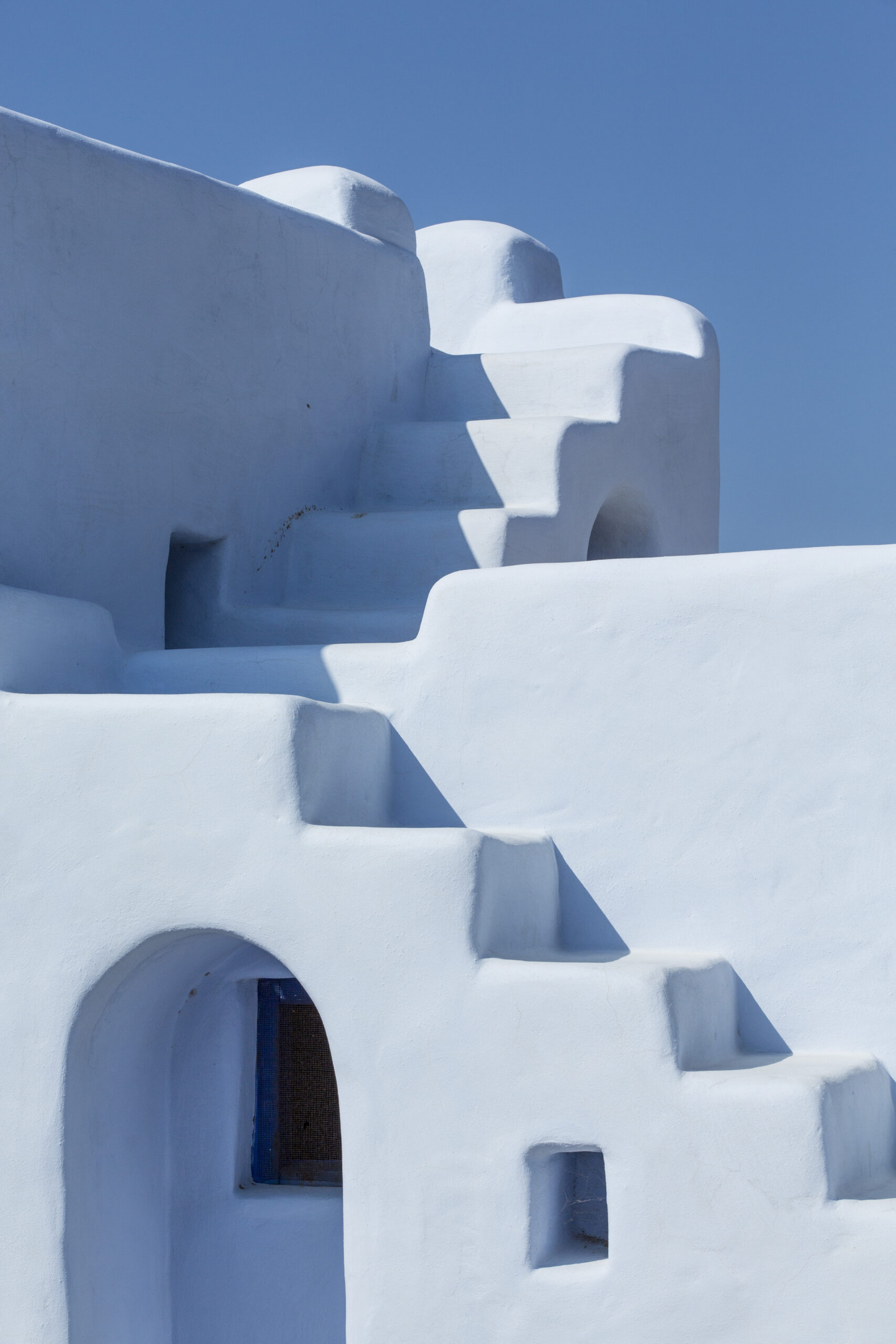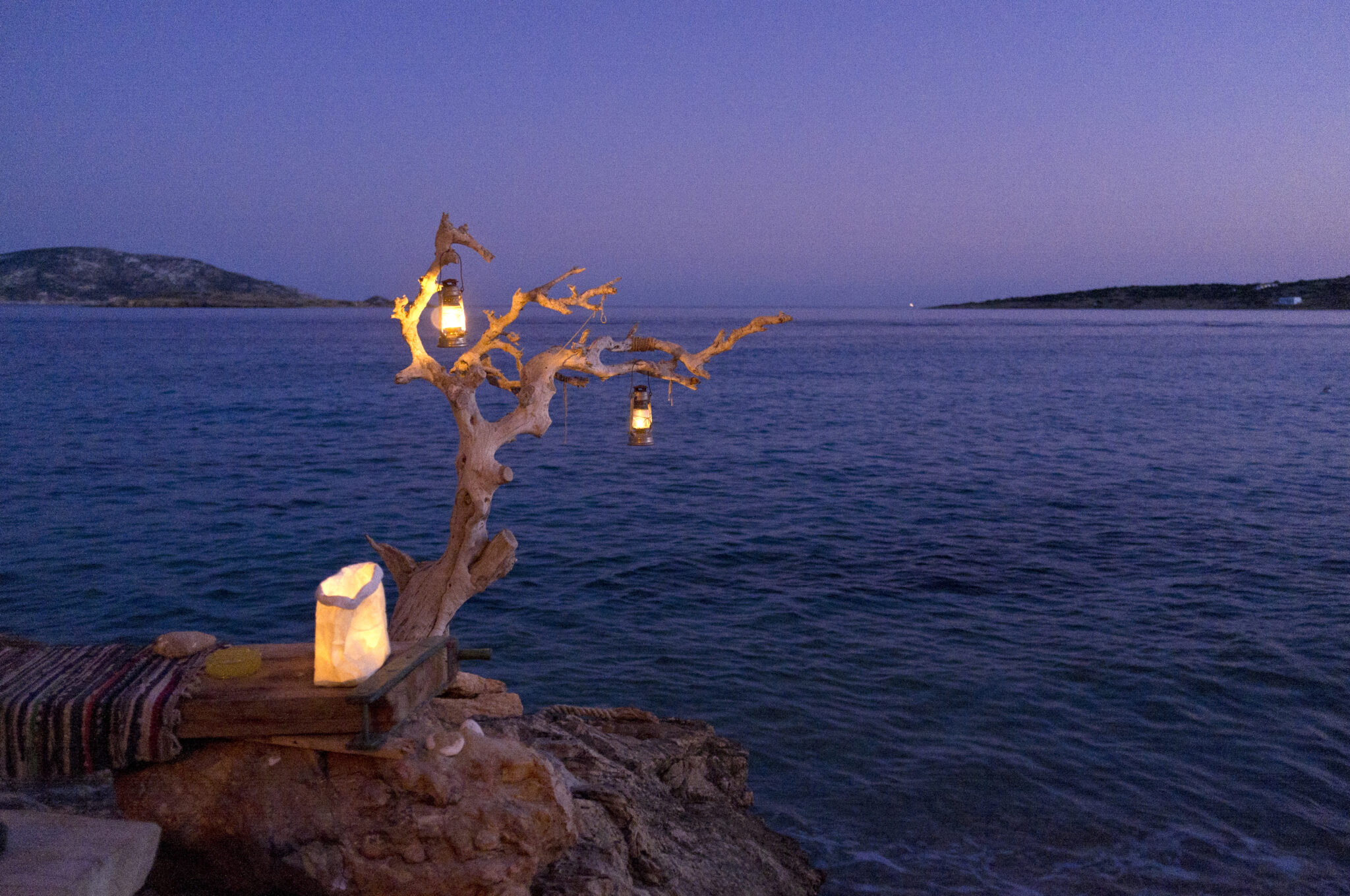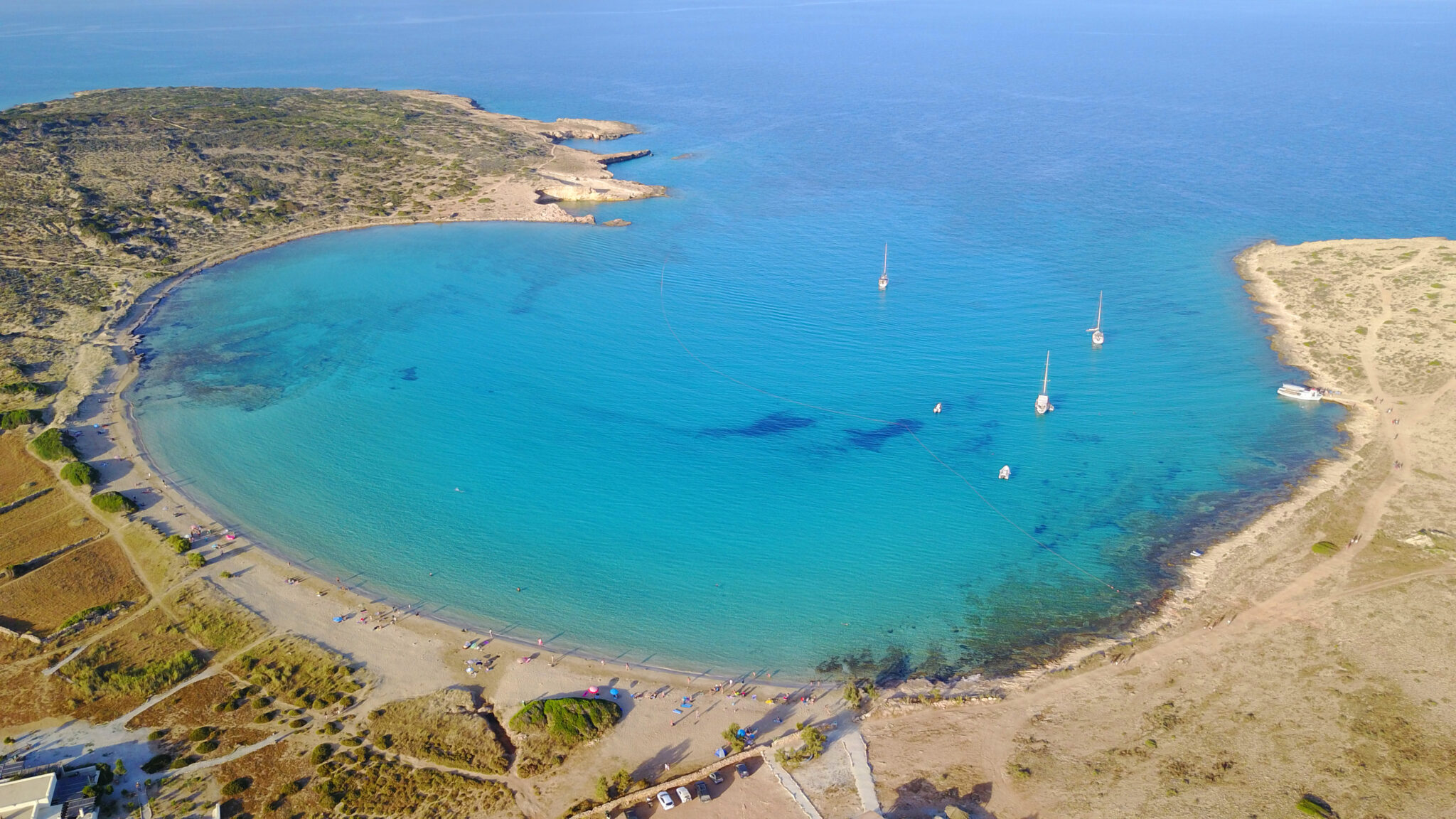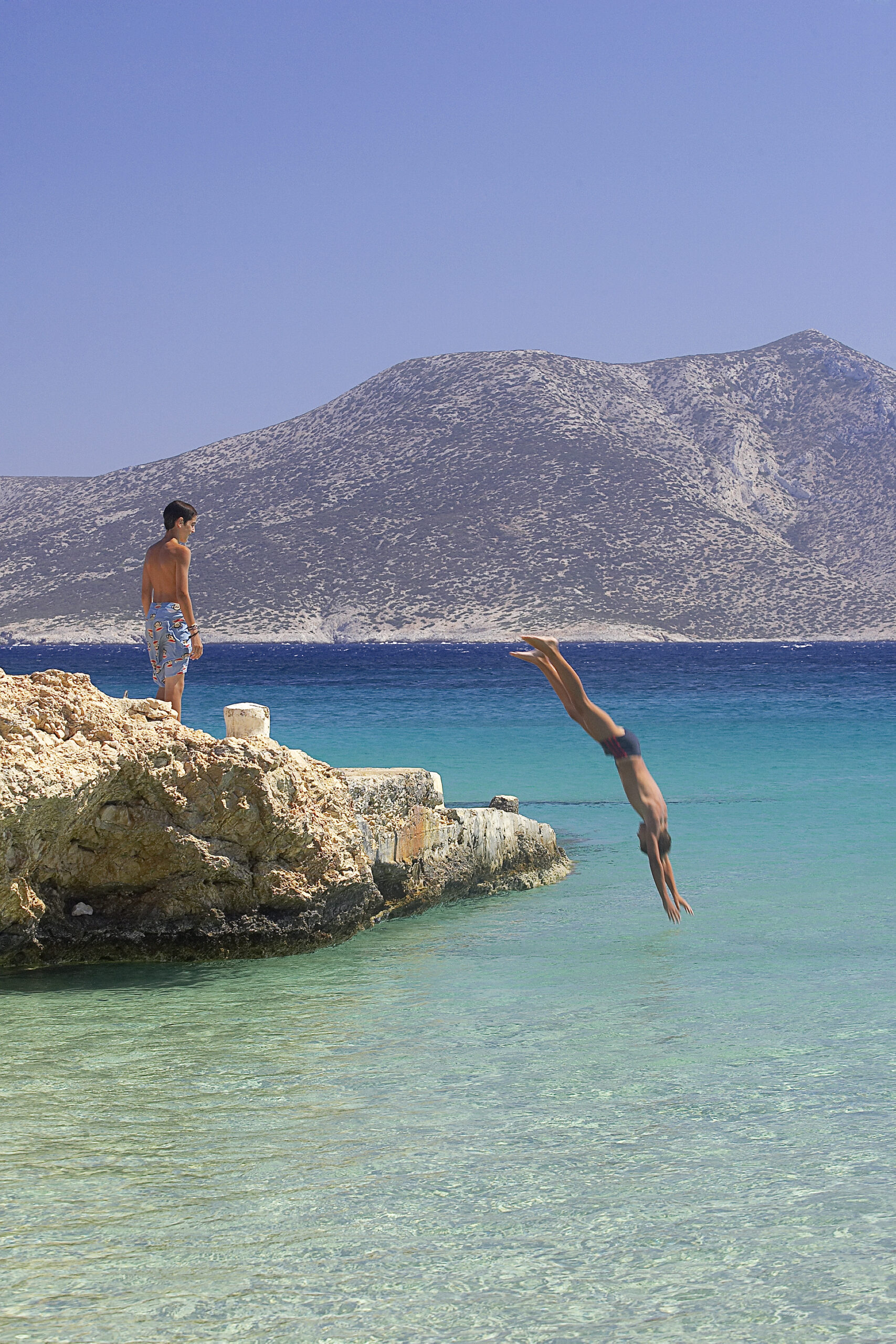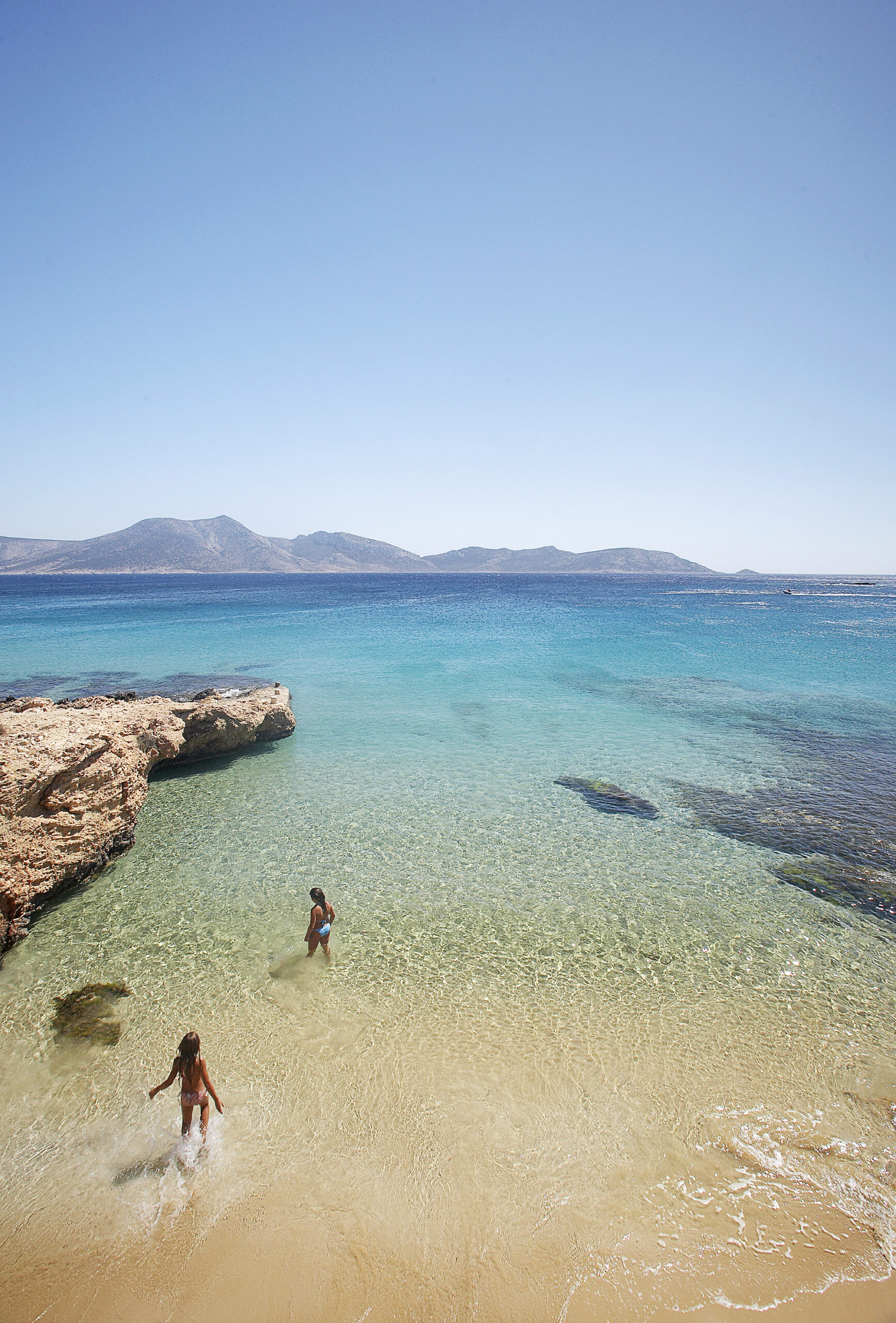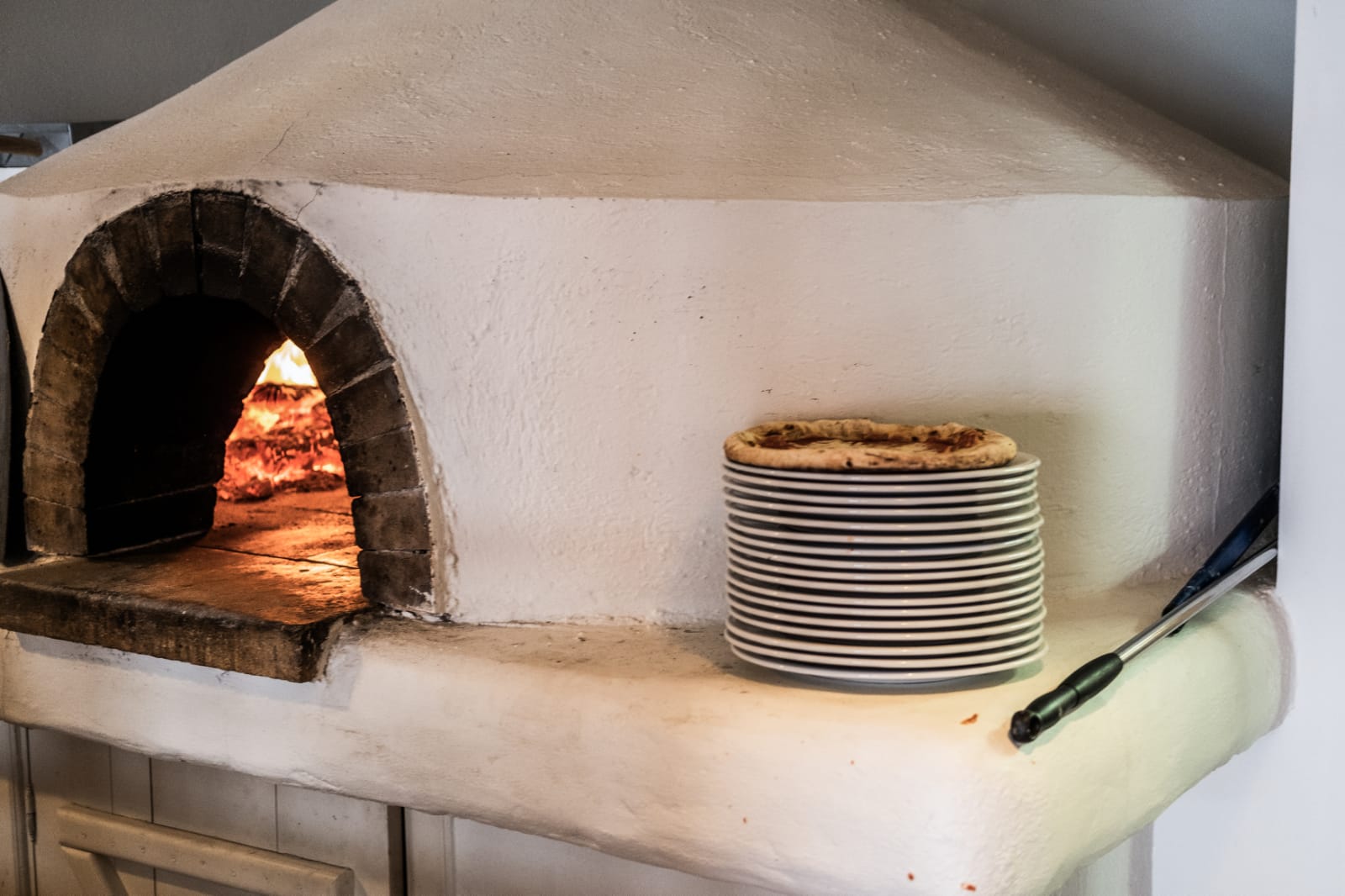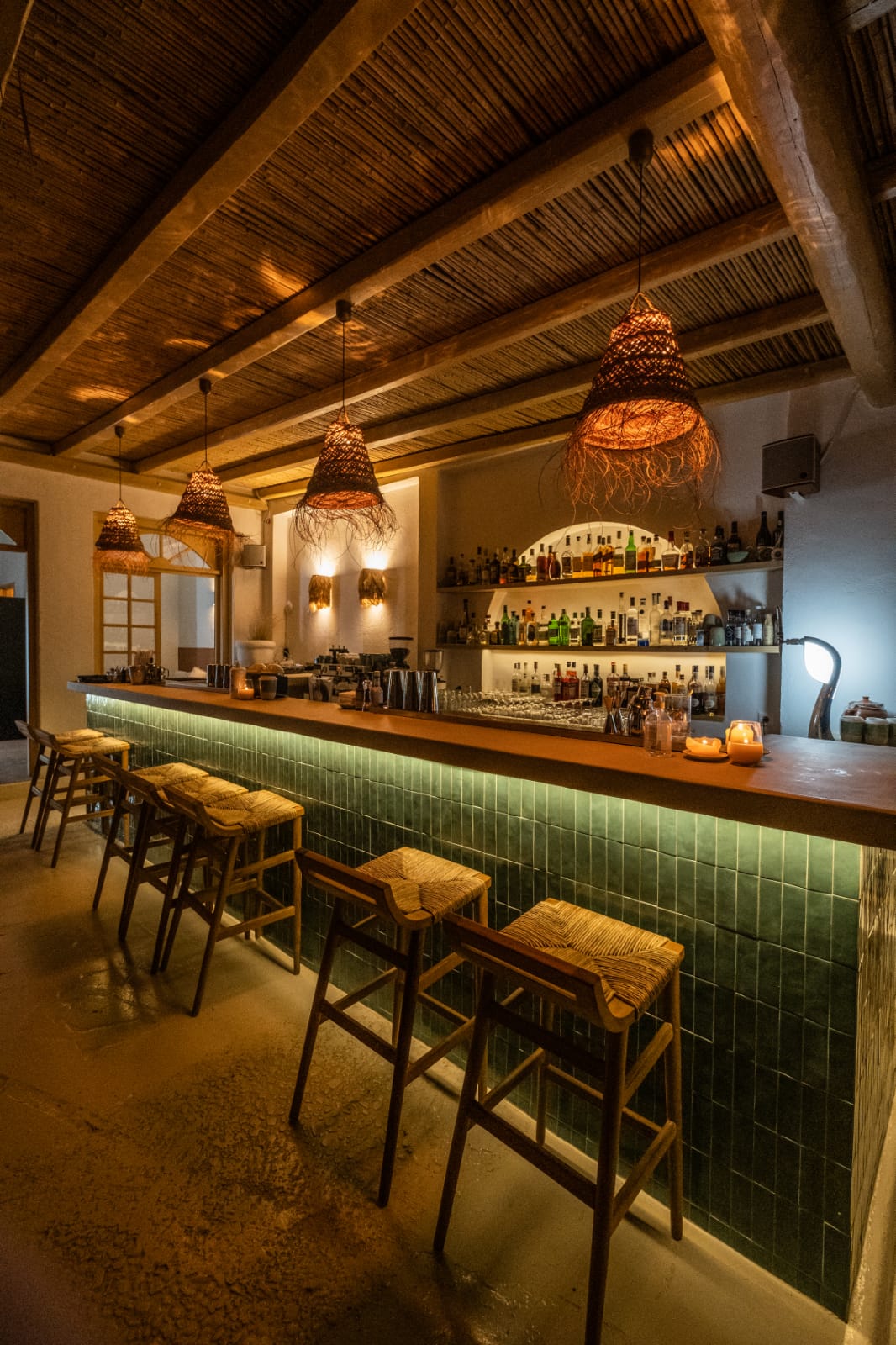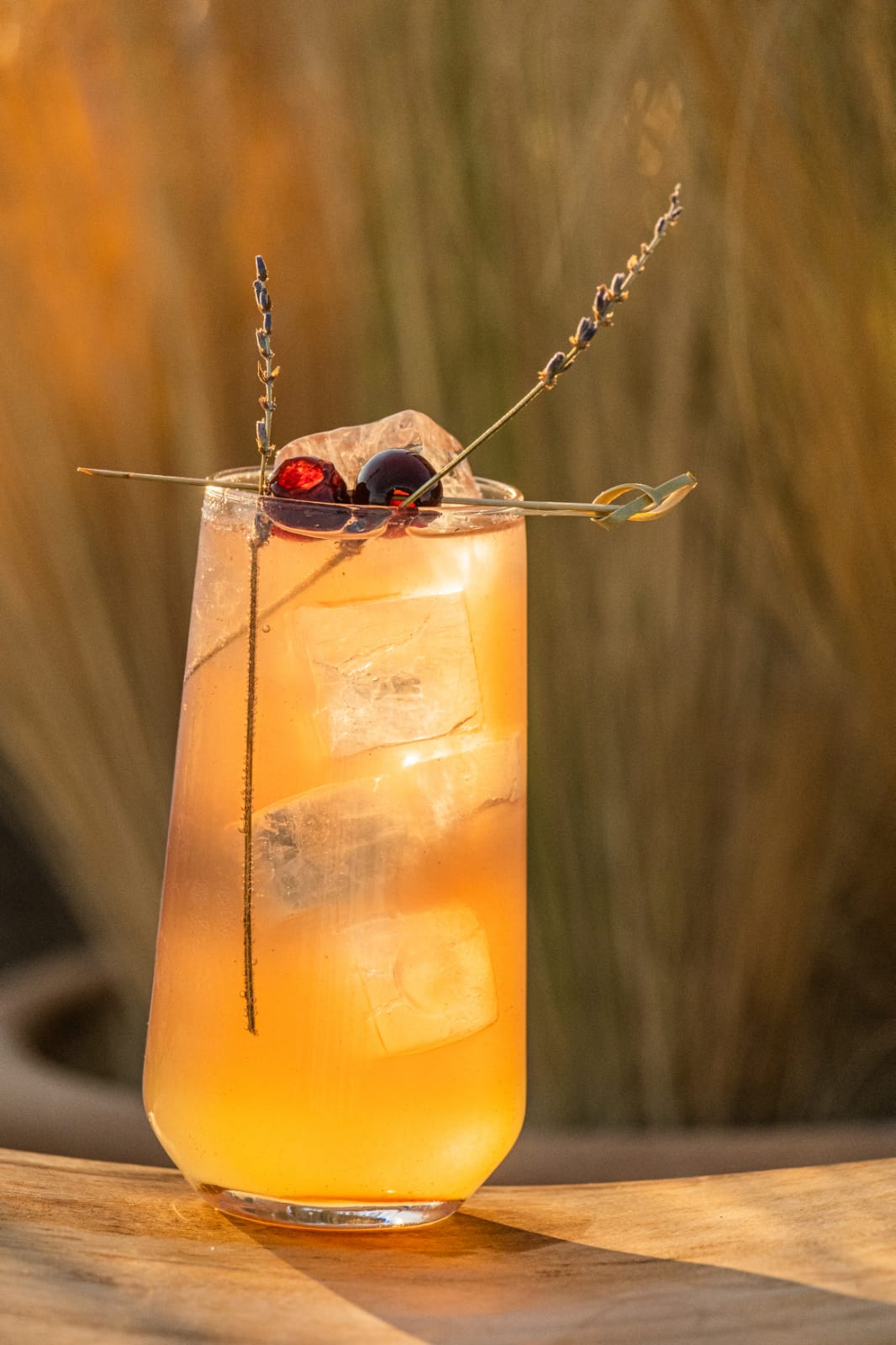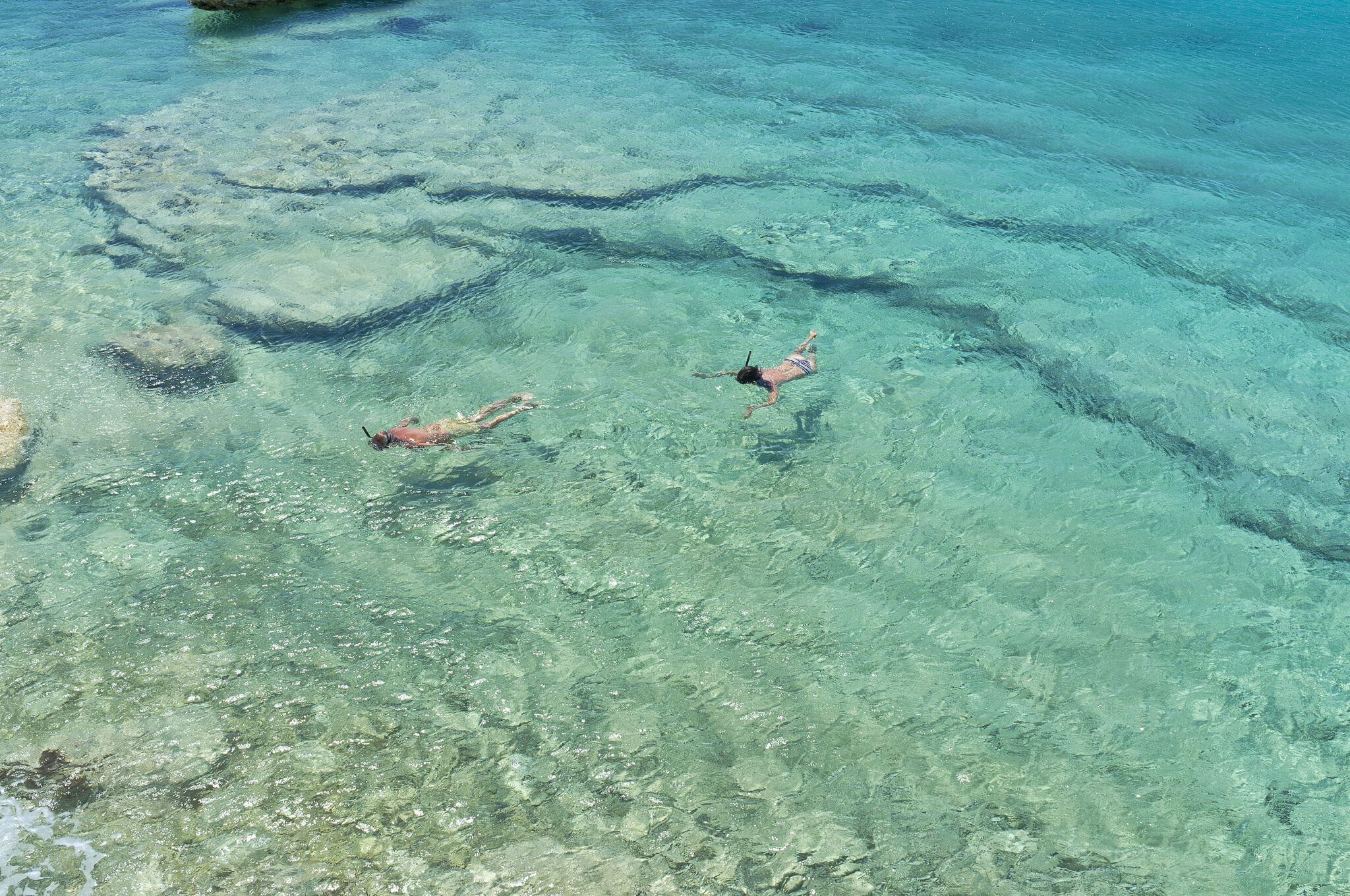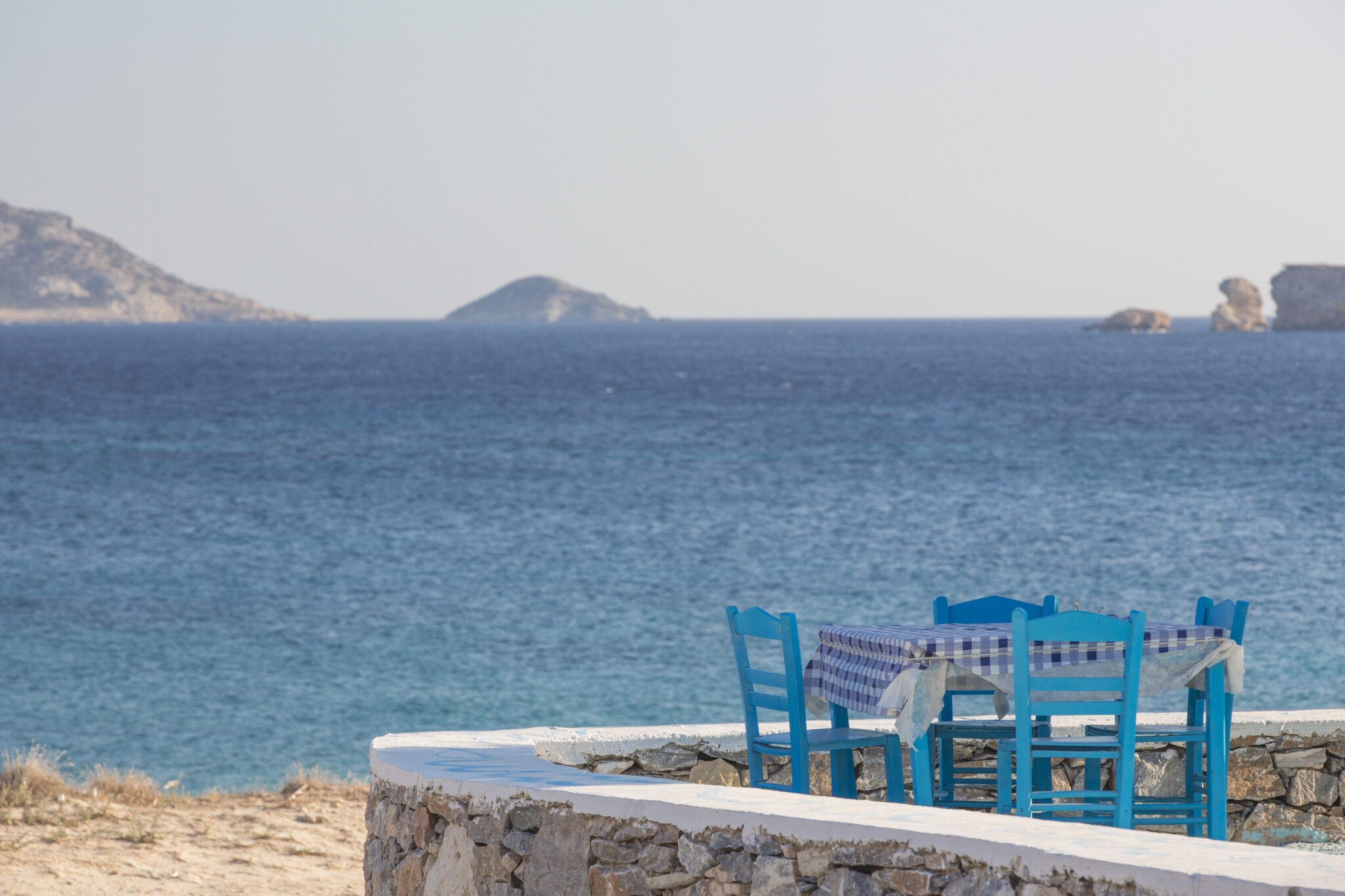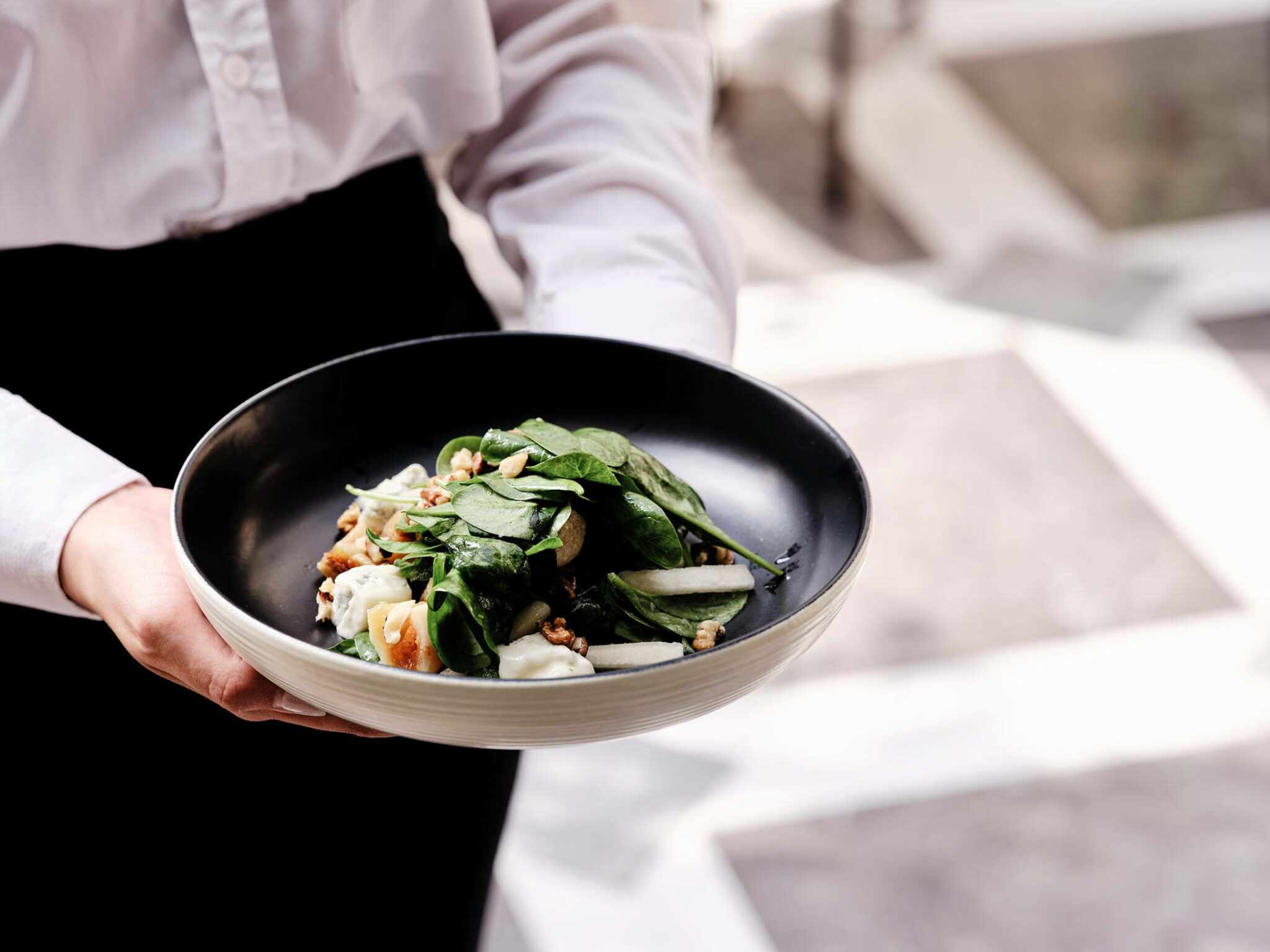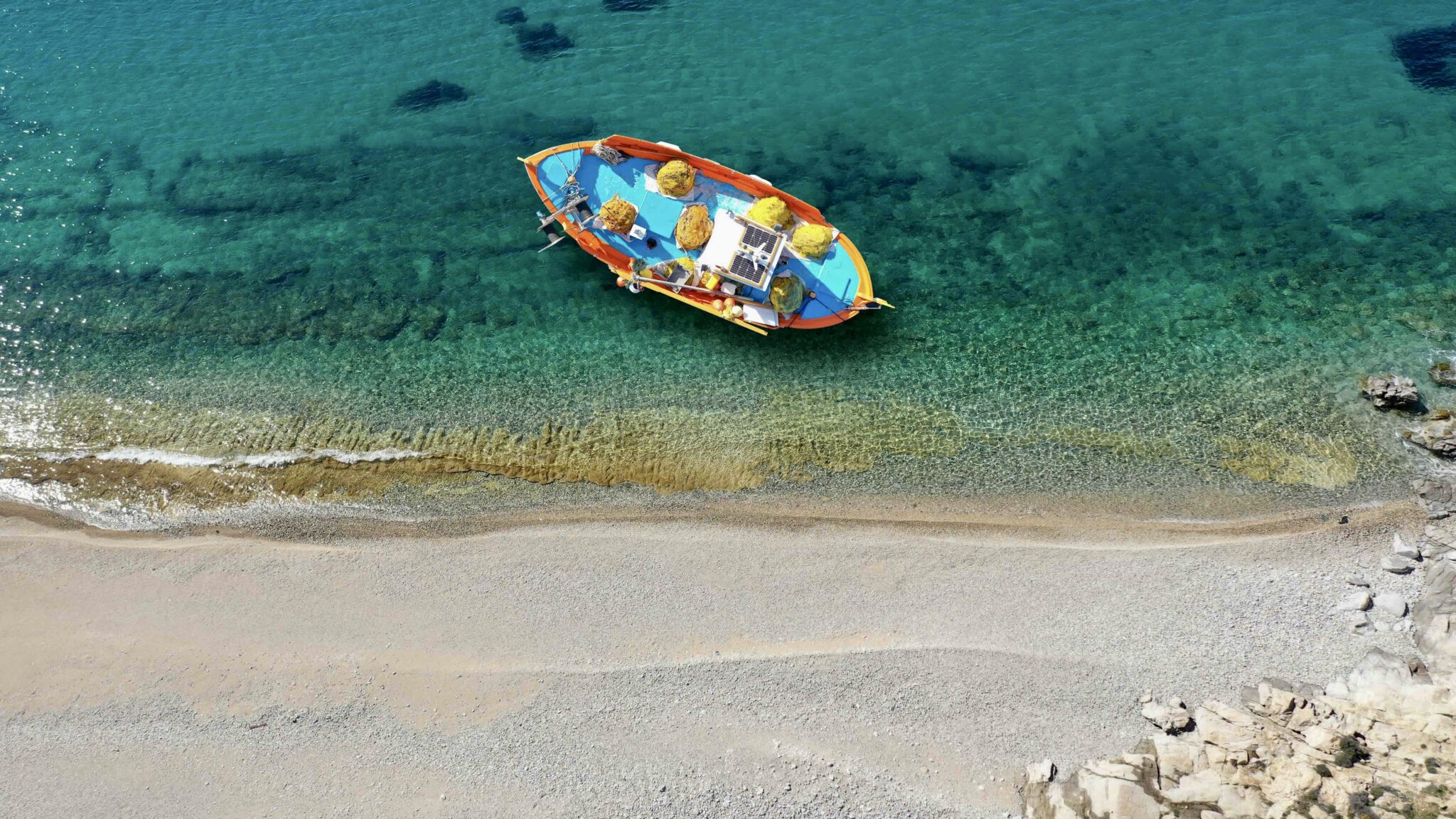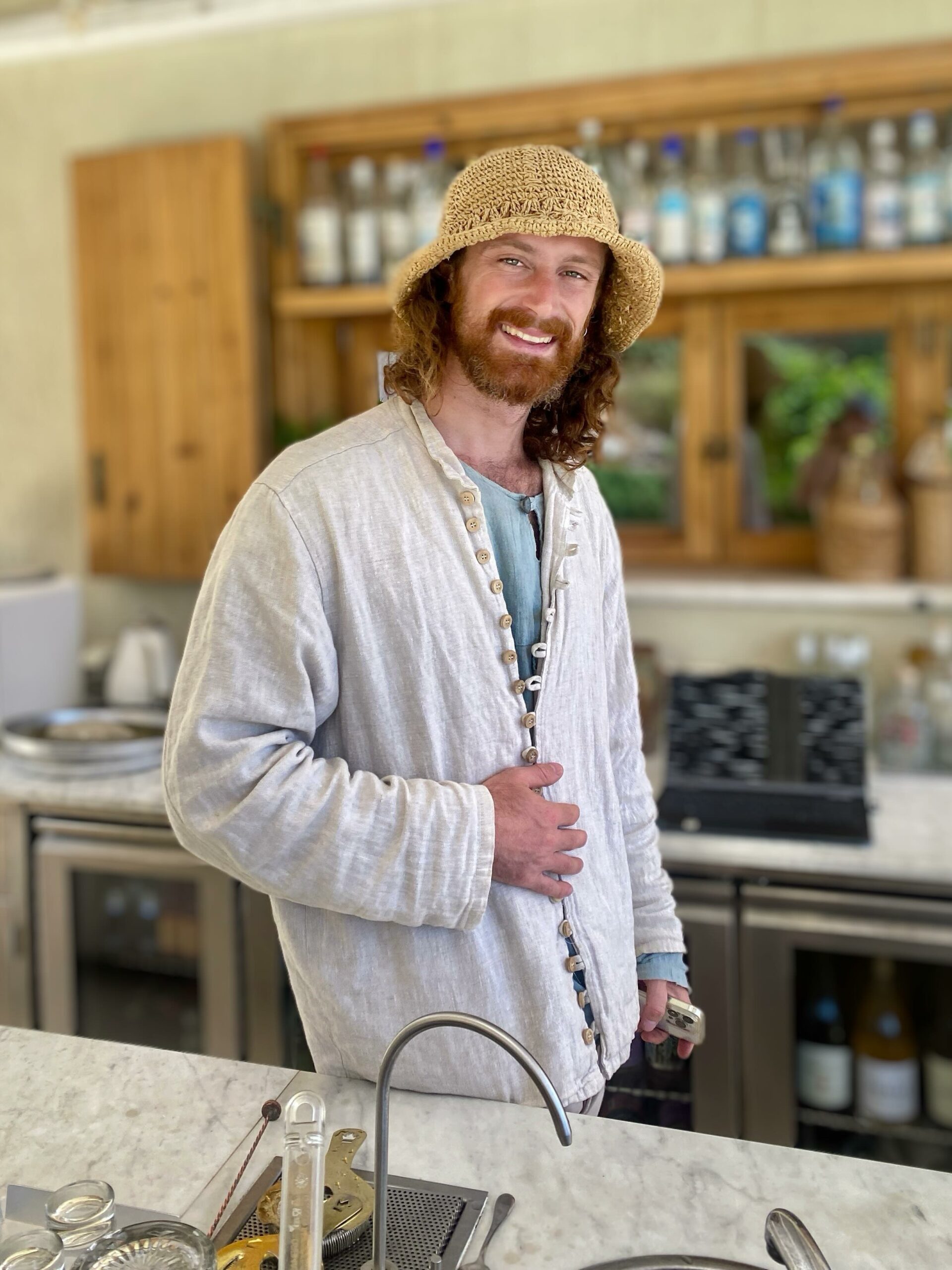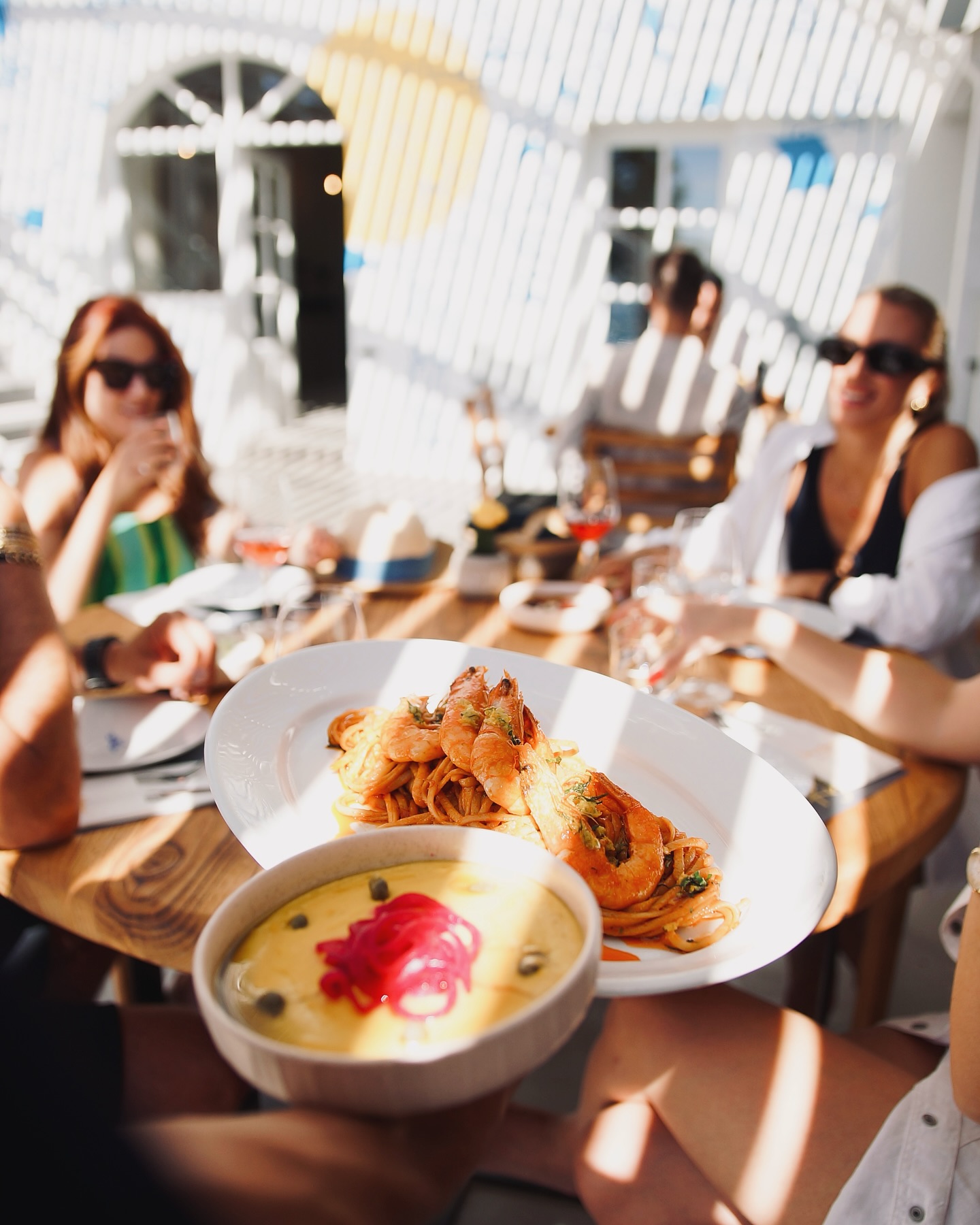Koufonisia, this dot on the map of the Aegean, was once known only because it was located near Keros, the internationally renowned sacred island of the Small Cyclades, whose ancient “mysterious” history still eludes us.
In the 1960s, the residents of Kato Koufonisi and the neighbouring islands began to gather in Pano Koufonisi, resulting in the creation of a settlement at the boundaries of the village. Today in Kato Koufonisi there is only the tavern Venetsanos.
It is said that, in the 1970s, a couple of Greek travellers (according to another version, the woman was Greek-Italian), while touring Pano Koufonisi, stumbled upon Platia Pounta and, enchanted by its beauty, bought as much land as was available, secured the title deeds and left.
Later, they built a house there, the only one in the area, since they own all of it. Over the years, the beach was given the name “Italida” after the owner, who used to visit the house more often. Today, she lives permanently in Italy and is constantly receiving tempting offers to sell the land that is justifiably considered the most premium part of Pano Koufonisi. Nevertheless, she still fiercely resists.
In the 1980s, the quality of life in Koufonisia improved substantially. In particular, in ’83 the island was electrified and in ’87 it acquired a port. However, for many years residents had to wait for the ferry that arrived on the island once a week or every ten days, with all that this might mean for their basic supplies.
In the early 90s a small tourist stream began to appear, consisting mainly of more “alternative” visitors seeking to experience the Small Cyclades’ slow lifestyle. Most of the foreign visitors were Italians–for some unknown reason-, which is still the case today. At that time, it is said that those who visited Koufonisia were rather intellectual people, quite different from the glamorous Italian visitors of the Ionian Islands.
Unlike the French who enjoy hiking the mountains and trails of the Cyclades with their families, the Italians fell in love with Koufonisia because here the concept of time seems to be non-existent and stillness becomes an enjoyable journey of no return.
In the 1990s, Greeks and foreigners used to stay in a semi-organised campsite, which later could accommodate up to 800 people. With the inhabitants of the island being mainly fishermen, the hospitality industry had not yet been introduced to Koufonisi. Although today fishing has been downgraded to a secondary occupation, tourism did not seem a serious prospect at the time. Even today, Koufonisi still holds the first place of the largest proportion of fishing boats in relation to its size. In total, there are currently about a hundred active boats.
The first business activities were simple, but multifaceted. Whatever one chose to do, a few rooms for rent were always added on the side. Melissa and Phoenix, the island’s taverns, Sorokos, a once humble bar at water’s edge that has now evolved into a unique cocktail experience, and Kalamia, which was the only choice for coffee, started to appear. All these places are still today the main addresses on the tourist guide for the young and the initiated.
From 2010 onwards, tourism began to take the form of a wave that grew every year. In 2014, Highspeed ferry was added to the access options to the island and allowed more people to get there in 4-5 hours. This gave rise to the type of visitor who wanted to book a stay for 3-4 days, instead of 15 and then spend endless hours on the ferry back. By 2020, Koufonisia had acquired biological wastewater treatment, a new port, desalination plants, a medical clinic, a library and other facilities not often found even in large villages in mainland Greece.
Today, Koufonisia has managed to maintain the label of a premium destination that expresses the modern simplicity that these times ask for. Departing from the port and at a distance of just three kilometres one can enjoy five amazing beaches with that distinctive teal colour of Koufonisia (Ammos, Finikas, Fanos, Italida, Pori) and others even more hidden, cavernous and instagramic as hell, such as Gala.
It’s no coincidence that even one of the most influential teams in fine-drinking, The Clumsies, with their eponymous bar in Athens, ranked No3 in the World’s 50 Best Bars 2020, have established their new addition, called Jet, here. And because life on the island runs slow, but also until very late, Koufonisi has also an after bar, Nolipot.
This year, the turnover exceeds that of 2019. According to the “permanent” mayor Antonis Koveos, the island is fully booked until mid-September, which translates into 4500 people and about 100 boats and yachts daily.
Koufonisia has established its own aesthetic simplicity, which seems to fully satisfy an audience that has experienced more premium destinations, but consciously chooses a simpler, more real lifestyle, without sunbeds, without umbrellas, without beach-bars and without stress.



